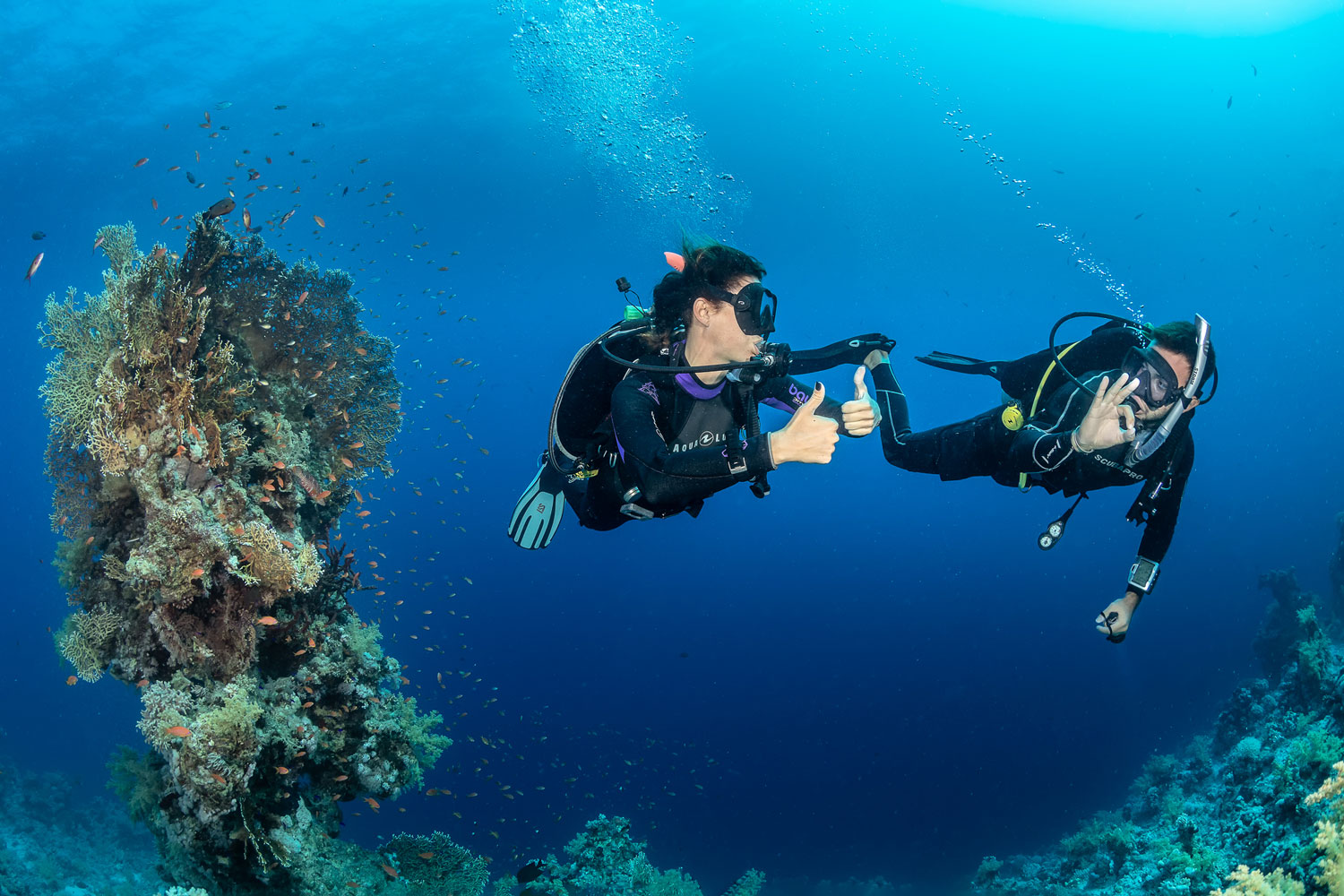Features
Silence in the Tower of Babel: a brief story about hand signals
When landlubbers ask divers the reason why they are attracted to such a hostile world, the most common answer is that beyond the discovery of the underwater wonders, Jacques Cousteau’s Silent World provides a soothing feeling of zen and inner peace…until the noise of a diving shaker or your buddy’s agitated hands wake you up all of a sudden and bring you back to a basic reality: the need to communicate.
Communication underwater deals serve two main purposes, safety and decision making within the team. Safety-related communication entails assessing a divers condition, checking gauges, defining a depth, a level, an exit direction or a decompression constraint. Decision making is required to deal with unexpected events or emergency situations.

For the vast majority of open circuit divers, the means of communication underwater are non-verbal and quite limited. Writing is effective but time consuming. Light signals are pretty basic and only operate in dark environments. Touch signals are even more limited. And while voice communication in full-face masks is available, it hasn’t proven very popular in the diving community outside of scientific projects… maybe because in the end, we’d rather ‘talk to the hand’ and keep the underwater experience as silent as possible.
For the most part, we are left with two hands and ten fingers to engage in conversation. Some techies will argue that one hand and five fingers must suffice, as the fact that the other hand might be busy with a light, spool, or other tool. Divers also use gestures familiar from everyday life, like nodding one’s head for ‘Yes’. Others may be local, for example to point out species of marine life. Special signals have been created for specific diving circumstances, to give instructions, provide information, or to indicate a condition or emergency.
It would be great if we all shared a common language of hand signals derived from those with similar meanings on land, to reduce learning effort and time and simplify the communication. The reality is slightly different. Despite the effort of the RSTC (Recreational Scuba Training Council), and even though there is a range of commonly used signals, the recreational diving community has developed a variety of confusing dialects which can make one feel lost in translation. Who hasn’t attended pre-dive briefings where flashing twice five fingers translates into a half cylinder’s pressure, when at other times it might be expressed by forming a ’T’ with one hand perpendicular to the other?

This diversity can make communication between divers imperfect at best and non-existent at worst. Its cause isn’t so much a sundering of languages like in the story of the Tower of Babel as parallel developments in different communities isolated from each other. As a result, one could argue that in the recreational diving world, the risks are limited but the potential for miscommunication can make emergencies worse.
In technical diving, the situation is different: Despite the variety of training agencies, the tech community can pride itself on speaking one common language, necessitated by the greater risk compared to recreational diving. Tech diving signals are one-handed using five fingers (with special adaptations when the hand is covered by mitts or three fingers gloves). Information is often provided using a signal to indicate the subject (e.g., pressure, depth, time), followed by a number. Numbers are indicated by a sequence of digits. Digits from one up to five are given with the fingers pointing up and the palm facing outward, while digits from six to nine are given with the hand held horizontally and the palm facing inward. Ten, being a double-digits number, requires a ‘one’ followed by a ‘closed Ok’ for ‘zero’. As a rule, the use of the thumb is avoided whenever possible to avoid confusion with the thumb up signal for ‘end the dive’.

Technical diving usually involves decompression and/or overhead environments. Specific one-handed signals have been developed for both and are shared among all technical divers no matter their background. Reviewing each individual signal would go beyond the scope of this article, but if you’re interested, the information is easily available online.
Another major difference between recreational and technical communication is the avoidance of everyday gestures. Techies don’t like room for interpretation or trusting the ‘obvious’. Instead, they crave for clarity through confirmation of any given hand signal. Communication not just about delivering information but also about making sure it has been properly received and understood. Confirmation plays a major role in avoiding loss of information and is critical for the team’s safety.
In an ideal future silent world, signalling practices from technical diving will spread to the recreational world to avoid confusion and the need for re-learning processes, for the sake of safety. Hush…
Video Tutorials
A special thanks to DAN Europe Ambassador, educator and sidemount guru Steve Martin at http://sidemounting.com , for producing these hand signal videos.
Are you Ok?
I have a problem/Something’s not right
Ascend
Descend
Out of Gas
I’m calling the dive
How much gas do you have?
Shoot a Surface marker Buoy
Ascend to safety stop for 5 min
Numbers: 0-100 (abbreviated version)

